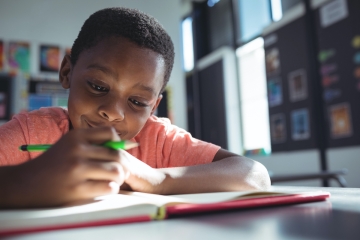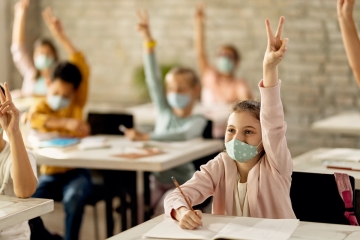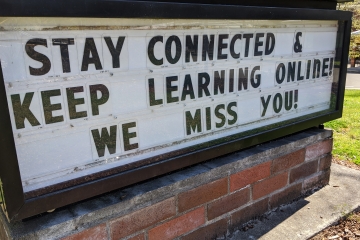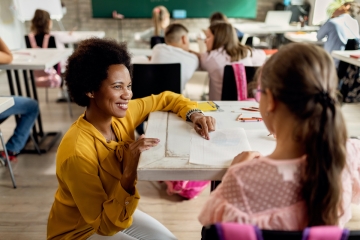Editor’s note: This is the fourth in a series of posts about envelope-pushing strategies that schools might embrace to address students’ learning loss in the wake of the pandemic. Find the first three posts here, here, and here.
Over the past several weeks, I’ve been exploring various options that elementary schools might embrace next fall when (let’s hope!) almost all kids are back in school full time and the focus shifts to academic recovery.
That’s also the focus of a set of crowd-sourced recommendations that we plan to release later this month, based on the best evidence from rigorous research studies. The suggestions will look familiar. By their nature, evidence-based practices don’t tend to be very innovative. Among them: aim for acceleration, not remediation; ensure that tutoring and other extended-learning opportunities are closely tied to regular classroom instruction and curriculum; work as hard at getting the school’s culture right as offering beefed-up mental health services, since a great culture is what’s going to largely determine whether kids get the social and emotional support they most need; and build everything around a set of high-quality, content-rich instructional materials.
That plan takes as given that most students, ready or not, will move ahead to the next grade level next fall. That’s the path of least resistance, especially at a time when everybody, from teachers to parents to kids, is exhausted by the disruptions of the past year and desperate to get back to normal. In great schools, well-supported teachers will do what they can to help accelerate students’ learning, such as focusing on the highest-priority content in the previous grades to fill in any key gaps in learning, spending most of their time on grade-level instruction, assessing students regularly to inform mid-course corrections, and making limited but strategic use of small groups to better tailor their teaching to the needs of individual kids.
Still, as readers of this series already know, I’m skeptical that such strategies will do enough to address the significant learning loss that so many kids have experienced. Lots of students will start the 2021–22 school year much further behind than usual—and usual, in the pre-pandemic days, was pretty darn bad. While teaching grade-level content isn’t a bad rule to follow, perhaps that rule needs to be broken for kids who have effectively missed an entire year of school.
That’s why I’ve been floating the idea of a “second 2nd grade”—either for all kids, or all kids in high-poverty elementary schools, where most students were already achieving below grade level before the Covid-19 crisis hit, or at least for the “Covid Kindergarten Cohort.” Millions of children nationwide have been stuck at home for a whole year. For the littlest ones, remote learning has been a cruel joke. Why not give them their pandemic year back? At least the kids who need it?
But even that strategy doubles down on grade levels—quite literally. So today let’s climb the Mount Everest of educational practice: How might we truly personalize instruction and blow up the whole notion of “grade levels” so that elementary students can learn at their own pace, and get what they need as they recover from the pandemic? So that, every single day, every single pupil experiences just the right amount of challenge without feeling either bored on the one hand or overwhelmed on the other? And in a way that ensures that the farthest-behind kids—including and especially kids in poverty and kids of color—don’t stay that way, but make it back to grade level within a reasonable amount of time?
These are great questions, but there are no easy answers. If there were, every school in America would be doing personalized learning already. But for elementary-age children especially, it’s really quite hard to figure out how to let them “move at their own pace.”
What makes personalized learning so hard for the littlest kiddos?
First, much of what the youngest learners are supposed to master in school is about how to behave and get along with other kids and adults. Personalized instruction doesn’t make a lot of sense when we’re talking about sitting still during story time, lining up for bathroom breaks, or making it to the cafeteria and back without incident. Furthermore, American schools’ emphasis on collaborative learning makes it somewhat harder to “personalize” each child’s education. Teachers ask students to work on projects together, to discuss stories with their peers, to solve math problems with partners, to edit one another’s writing. Some of this group learning can certainly be overdone, but we do it because we care about developing important social skills like teamwork, and also because these methods can help children master the Three R’s and much more. Plus, especially in the shadow of a traumatic event like the pandemic, building relationships between students and their teachers, and students and one another, is essential to the learning process. Kids are social beings, not knowledge-acquisition machines.
Second, personalized pacing is tricky for the youngest kids because of our discomfort with grouping students homogeneously, with other kids with similar current abilities or readiness levels. This is of course an age-old method, with classes divided up between the Bluebirds, the Redbirds, and the Yellowbirds, so that Ms. Smith can work with small groups of children who are all at about the same level in reading or math on a given day.
The discomfort comes from research showing that kids in the lowest group rarely catch up, both because the level of instruction is not challenging enough, and because of negative peer effects. Almost everyone benefits from being challenged with grade-level instruction (if provided appropriate “scaffolds”), and almost everyone benefits from getting to learn along with higher-achieving students who serve as positive role models, ask better questions, and model good work. It also doesn’t help that the kiddos invariably figure out what’s going on—that the Redbirds are the top group and the Yellowbirds are the bottom.
Our squeamishness about grouping has a parallel in the older grades, where we worry about tracking, and whether the lowest track is in fact a slow track to nowhere. Yet, tracking is still widespread, especially in affluent communities, and particularly in math, where we simply accept that some middle school and high school kids are going to be further along the mathematical progression than others. And we accept—in high school and college—the notion of “prerequisites.” It doesn’t make sense to enroll students in French 3 if they haven’t mastered French 2, to say nothing of French 1.
These challenges around grouping could certainly be overcome, but it’s going to take real R & D to figure out promising approaches and take it to scale. Ideally, we’d want someone to build a model like the middle school Teach to One math program, where high-quality daily assessments and an ever-improving algorithm regroups students on a daily basis, and helps teachers know precisely which knowledge and skills to cover tomorrow. It takes this sort of high-tech magic because kids don’t learn in straight lines; their trajectories are jagged, and they vary across subject areas and within particular domains. No teacher has the capacity to figure out how to group students perfectly, day in and day out, on top of their other responsibilities.
Next week we’ll examine some promising examples of schools that have successful tackled these challenges and opened the door to effective personalized learning in the early grades. As we’ll see, it’s not for the faint of heart.







